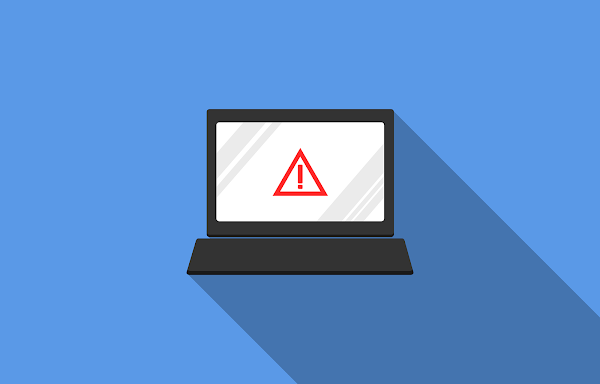Regardless of the size of a business or industry, cloud computing practices are becoming an increasingly popular IT practice among companies. It is a technological process that provides different services through the Internet on an on-demand basis. The resources involved in this process are various kinds of tools and applications, including software, servers, databases, networking, and data storage. It has become the most common threat in the industry because cloud hacking has become more popular due to its growing popularity.
Cloud computing, by using the Internet to store files, offers the possibility of saving files to a remote database instead of a proprietary hard drive or a local storage device. If an electronic device has access to the internet, it can access the data on the web and the software program that runs the data. This is as long as it has internet access.
It has therefore become the preferred option for both people and businesses for several reasons, including cost savings, increased productivity, speed and efficiency, performance, and security.
As cloud computing is growing more and more popular, it is hardly surprising that the cloud is a target for hackers, the threat of cyber-hacking has seen a rapid increase following the widespread adoption of cloud computing.
Cloud computing resources must be integrated into a company's cybersecurity strategy as an integral part of the defense against cybercrime to bolster the company's defenses. Using ethical hackers to scan cloud computing environments for vulnerabilities will allow businesses to maintain the highest degree of security. This will enable them to patch any security flaws before the attackers can exploit them.
How Does Ethical Hacking Work in Cloud Computing?
Because the choices for cloud computing are so diverse, cloud computing is now being used in some form or another by 98 percent of companies. Cloud services are often perceived as more secure than their counterparts, although they have their own set of problems when it comes to cloud hacking.
In the wake of the exponential rise of cyberattacks on cloud-based applications, businesses need to find trusted security experts who can fix vulnerabilities and close any holes that could lead to attackers entering their systems through these channels.
It is important to protect cloud computing resources from security vulnerabilities in ethical hacking, just as it is essential to protect any other part of the information technology system. In terms of ethical hacking, there are many hats that ethical hackers wear when it comes to cloud computing. A major part of what ethical hackers do in cloud computing is identify security weaknesses and vulnerabilities in the computing infrastructure for organizations. This is being done to strengthen the security of the cloud service.
The Types of Cloud Computing: What Are They?
It is imperative to know that there are several different types of cloud computing that you can select according to your requirements. As a first step to classifying cloud services, you should start by determining where the cloud services are physically located:
Cloud services that are available to the general public are often called public cloud services because they are hosted and provided by third parties.
Private clouds are the cloud services available only to private individuals who want to use them for personal purposes. Depending on their needs, they can either be hosted by the company itself or by a third-party service provider.
Alternatively, we can say that the customer uses a hybrid cloud strategy, in which the customer uses both public and private cloud services, for e.g., he uses a public cloud application and a private cloud database to store sensitive data.
Ethical hackers should familiarize themselves with the following cloud computing offerings as examples of how they can make use of the internet:
There is a common misconception regarding what Software as a Service means. Software as a service (SaaS) means that the cloud provider is responsible for updating and maintaining the software applications for the customer. The use of SaaS for business purposes includes the use of productivity applications such as Microsoft Office 365 as a common example.
'PaaS' stands for the platform as a service, and it provides customers with the ability to develop and run applications on a platform to that they have access. There are several examples of cloud computing services available, such as Microsoft Azure and Google App Engine.
As the name suggests, Infrastructure as a Service (IaaS) offers its customers access to hardware resources, such as computing, memory, storage, and networks through a subscription-based service. It should be noted, however, that customers have to provide their software that runs on the infrastructure.
Cloud hacking methodology: Essentials
Following the explanation of “What is cloud hacking?” and “What is cloud exploitation?" we will examine the methodology of cloud hacking. These are some examples of the kinds of attacks that ethical hackers must be aware of in the world of cloud computing to protect themselves.
Attacks using brute force, a brute-force attack is the easiest way to break into a cloud-based service, which involves trying several different combinations of usernames and passwords to see which one works. After gaining access to the system, adversaries can proceed to wreak havoc on the system and exfiltrate data from the cloud the same way they can do with any other kind of attacker.
Phishing is a different strategy than brute force attacks. This is because it impersonates a trusted third party to steal credentials from users by impersonating that third party. This is a more sophisticated kind of attack where the message is tailored to a particular individual consisting of data that is very specific.
A credential stuffing attack is one in which employees at an organization reuse their usernames and passwords across multiple services within their company. This puts the company at risk of being the victim of a credential-stuffing attack. An adversary can verify whether or not a list of user credentials stolen from a previous attack is a valid account on a different IT system. This is done by browsing through its database containing the stolen credentials.
As the cloud computing industry moves further towards the advancement of cloud computing, ethical hackers play an active role in the process. There have been an increasing number of cyberattacks on cloud infrastructure over the past few years. Ethical hacking is a key factor in making sure all businesses of any size and in any sector have appropriate defenses in place.



























